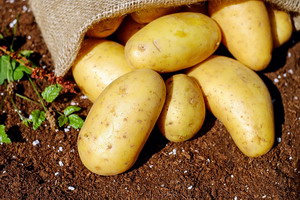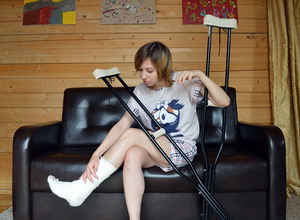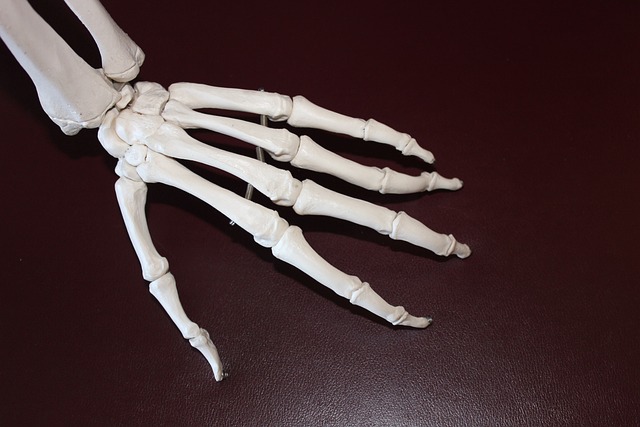 Ellen casually asked me the other day “What causes arthritis?” She was curious because her sister, who is almost 5 years younger, was complaining of arthritis while Ellen has no such complaints. My first response was “What kind of arthritis?” Technically there are over 100 kinds of arthritis and more than 50 million Americans suffer from some form of arthritis. Her response was “Oh just the regular kind.” That was not quite enough clarification for me as there are two most common sorts – osteoarthritis and rheumatoid arthritis, so my next question was “Are her fingers starting to bend towards the outside away from the thumb side?” This is a classic sign of rheumatoid arthritis. She said no but her sister’s knuckles were swelling and her knees hurt. Ah ha, sounds like we are asking about osteoarthritis – the so-called wear and tear arthritis.
Ellen casually asked me the other day “What causes arthritis?” She was curious because her sister, who is almost 5 years younger, was complaining of arthritis while Ellen has no such complaints. My first response was “What kind of arthritis?” Technically there are over 100 kinds of arthritis and more than 50 million Americans suffer from some form of arthritis. Her response was “Oh just the regular kind.” That was not quite enough clarification for me as there are two most common sorts – osteoarthritis and rheumatoid arthritis, so my next question was “Are her fingers starting to bend towards the outside away from the thumb side?” This is a classic sign of rheumatoid arthritis. She said no but her sister’s knuckles were swelling and her knees hurt. Ah ha, sounds like we are asking about osteoarthritis – the so-called wear and tear arthritis.
 Right off the bat, I knew I was in trouble. The two most common medical answers to why you have osteoarthritis are age and genetics. But Ellen is older and she shares pretty much the same genetics so that answer is not going to fly. A history of joint trauma is another common cause, but her sister did not have any trauma that would affect all the joints in both her hands as well as her knees. Other common factors doctors point to as causes are obesity and sex as they see more osteoarthritis in obese people and more in women. Again, both Ellen and her sister are about the same weight and the same sex. Okay, we have run out of the usual answers as to why you might get osteoarthritis. This is not to say that these are not real factors to consider, but clearly, this does not answer why Ellen’s sister has arthritis and Ellen does not. There is more to this story than you can get from your medical information sources.
Right off the bat, I knew I was in trouble. The two most common medical answers to why you have osteoarthritis are age and genetics. But Ellen is older and she shares pretty much the same genetics so that answer is not going to fly. A history of joint trauma is another common cause, but her sister did not have any trauma that would affect all the joints in both her hands as well as her knees. Other common factors doctors point to as causes are obesity and sex as they see more osteoarthritis in obese people and more in women. Again, both Ellen and her sister are about the same weight and the same sex. Okay, we have run out of the usual answers as to why you might get osteoarthritis. This is not to say that these are not real factors to consider, but clearly, this does not answer why Ellen’s sister has arthritis and Ellen does not. There is more to this story than you can get from your medical information sources.
 I love a good medical mystery. Fortunately so do thousands of medical researchers who do all sorts of good work trying to solve these mysteries. The challenge is trying to piece together the tiny bits of information they provide into a meaningful whole. One thing we can all be sure of is that no matter how much information we have, there is a ton of information that has yet to be uncovered.
I love a good medical mystery. Fortunately so do thousands of medical researchers who do all sorts of good work trying to solve these mysteries. The challenge is trying to piece together the tiny bits of information they provide into a meaningful whole. One thing we can all be sure of is that no matter how much information we have, there is a ton of information that has yet to be uncovered.
 My first clue was coming from a personal experience a month ago. I have never been a potato eater, but Ellen loves them. I bought a bag of potatoes as part of our community St. Patrick’s Day celebration. We had several left over and as a result, I ended up eating potatoes several times over about a week. By the end of that time, my knees hurt. The word arthritis means joint inflammation. My knees were getting inflamed from eating potatoes. I knew the chemistry of this so I was not surprised. Potatoes and tomatoes are in the nightshade family and they contain a toxin called solanine. This toxin is used by the plant to defend itself from bugs eating the plant. Unfortunately, when humans eat tomatoes and potatoes this toxin gets into us, and it likes to attack the cartilage in our joints. This causes temporary inflammation in the joints if you stop eating these plants. If you don’t it will gradually cause long-term arthritis. Different people absorb this poison into their bloodstream in different amounts, so some people have obvious problems while others do not notice anything. So right off the bat, I have more information about possible causes of osteoarthritis – diet! Most plants have their own particular poisons they have developed for fighting bugs, fungi, and viruses – the same things we have to fight. Most of these poisons have deleterious effects on our bodies to some degree.
My first clue was coming from a personal experience a month ago. I have never been a potato eater, but Ellen loves them. I bought a bag of potatoes as part of our community St. Patrick’s Day celebration. We had several left over and as a result, I ended up eating potatoes several times over about a week. By the end of that time, my knees hurt. The word arthritis means joint inflammation. My knees were getting inflamed from eating potatoes. I knew the chemistry of this so I was not surprised. Potatoes and tomatoes are in the nightshade family and they contain a toxin called solanine. This toxin is used by the plant to defend itself from bugs eating the plant. Unfortunately, when humans eat tomatoes and potatoes this toxin gets into us, and it likes to attack the cartilage in our joints. This causes temporary inflammation in the joints if you stop eating these plants. If you don’t it will gradually cause long-term arthritis. Different people absorb this poison into their bloodstream in different amounts, so some people have obvious problems while others do not notice anything. So right off the bat, I have more information about possible causes of osteoarthritis – diet! Most plants have their own particular poisons they have developed for fighting bugs, fungi, and viruses – the same things we have to fight. Most of these poisons have deleterious effects on our bodies to some degree.
 Another clue to solving this mystery comes from anthropology. When looking at the skeletons of hunter-gatherers from thousands of years ago you do not find osteoarthritis, osteoporosis, or even teeth cavities. Yet once agriculture was established as civilizations began, these problems suddenly became common. We have a second clue that diet is related to osteoarthritis. Here it would not be potatoes that are the problem, but grains. Potatoes only existed in Peru until a few hundred years ago. A bit of research turned up that the plant poison in wheat called wheat germ agglutinin attacks two different joint molecules. Civilizations that thrived on grain crops set themselves up for arthritis.
Another clue to solving this mystery comes from anthropology. When looking at the skeletons of hunter-gatherers from thousands of years ago you do not find osteoarthritis, osteoporosis, or even teeth cavities. Yet once agriculture was established as civilizations began, these problems suddenly became common. We have a second clue that diet is related to osteoarthritis. Here it would not be potatoes that are the problem, but grains. Potatoes only existed in Peru until a few hundred years ago. A bit of research turned up that the plant poison in wheat called wheat germ agglutinin attacks two different joint molecules. Civilizations that thrived on grain crops set themselves up for arthritis.
 One of the newer understandings in the medical research world is that the proper functioning of our immune system is an integral part of health with every system in our body. Diseases like osteoporosis are now understood to be autoimmune diseases. Arthritis also has a part of the progression of the condition that is driven by the actions of the immune system. Chronic inflammation in the body mediated by macrophages (one of our immune cells) is one of the keys to the progression of osteoarthritis. The most common reason for macrophages to spit out inflammatory chemicals (cytokines) is in response to a leaky gut. The stuff that leaks across the gut wall fools the immune system into thinking that the body is being attacked by some harmful bacteria. Inflammation in these situations helps get rid of the bacteria. But chronic inflammation is bad. A leaky gut is usually a chronic condition.
One of the newer understandings in the medical research world is that the proper functioning of our immune system is an integral part of health with every system in our body. Diseases like osteoporosis are now understood to be autoimmune diseases. Arthritis also has a part of the progression of the condition that is driven by the actions of the immune system. Chronic inflammation in the body mediated by macrophages (one of our immune cells) is one of the keys to the progression of osteoarthritis. The most common reason for macrophages to spit out inflammatory chemicals (cytokines) is in response to a leaky gut. The stuff that leaks across the gut wall fools the immune system into thinking that the body is being attacked by some harmful bacteria. Inflammation in these situations helps get rid of the bacteria. But chronic inflammation is bad. A leaky gut is usually a chronic condition.
 With this awareness, I searched for research papers on osteoarthritis from a leaky gut perspective. I was rewarded with good information on human studies that show a leaky gut or microbiome dysbiosis is directly related to the formation of osteoarthritis. In simple terms, our gut health determines our level of systemic inflammation, which in turn sets us up to develop all sorts of diseases including osteoarthritis. Now we are getting down to the answer Ellen was looking for.
With this awareness, I searched for research papers on osteoarthritis from a leaky gut perspective. I was rewarded with good information on human studies that show a leaky gut or microbiome dysbiosis is directly related to the formation of osteoarthritis. In simple terms, our gut health determines our level of systemic inflammation, which in turn sets us up to develop all sorts of diseases including osteoarthritis. Now we are getting down to the answer Ellen was looking for.
 Although all the usual factors for developing arthritis are the same between Ellen and her sister, one big difference is their diets. Because Ellen lives with me she has a really weird diet. To be supportive, she eats whatever I am eating, and I have been focused on avoiding autoimmune triggers for almost 20 years now. That means we have had zero grains and vegetable oils in our diet for the last 20 years. We also spend most of our time eating a low-carb and low-lectin diet with special attention to supporting healthy gut bacteria. We are proactively avoiding foods that trigger inflammation. Her sister, however, eats a typical American diet. If you follow the medical recommendations for what constitutes a healthy diet, you will be very inflamed and have poor gut health. So even trying to be healthy fails when you listen to the currently approved health authorities.
Although all the usual factors for developing arthritis are the same between Ellen and her sister, one big difference is their diets. Because Ellen lives with me she has a really weird diet. To be supportive, she eats whatever I am eating, and I have been focused on avoiding autoimmune triggers for almost 20 years now. That means we have had zero grains and vegetable oils in our diet for the last 20 years. We also spend most of our time eating a low-carb and low-lectin diet with special attention to supporting healthy gut bacteria. We are proactively avoiding foods that trigger inflammation. Her sister, however, eats a typical American diet. If you follow the medical recommendations for what constitutes a healthy diet, you will be very inflamed and have poor gut health. So even trying to be healthy fails when you listen to the currently approved health authorities.
 I believe we have identified the reason Ellen’s sister has osteoarthritis and she does not – diet. Many other factors go into creating arthritis, but an underlying systemic inflammation seems to be the starting point. Let’s look briefly at the next steps in the process of creating osteoarthritis. Typically the joint gets challenged in some way. In weight-bearing joints like hips and knees, it is easy to strain the ligaments and tendons that hold the joint together in proper alignment. When you move the joint without good alignment the cartilage in the joints gets bruised and damaged. Since the joint interiors don’t have a direct blood supply, the healing process is very poor. Nutrition to repair the joint has a hard time getting in to do its job. If the joint surface has inflammatory chemicals attacking it then immune cells will be attracted to digest the damaged tissue. Over time the cartilage gets thinner and thinner until you end up with bone on bone. In the old days, this was thought to be wear and tear. Now we know it is more inflammation and digestion. The inflammation will also cause calcium to crystallize out from the intracellular fluid and deposit around the joint causing bone spurs. Over time these harden and become the knots in the finger joints and the grinding limitation in the hips and knees.
I believe we have identified the reason Ellen’s sister has osteoarthritis and she does not – diet. Many other factors go into creating arthritis, but an underlying systemic inflammation seems to be the starting point. Let’s look briefly at the next steps in the process of creating osteoarthritis. Typically the joint gets challenged in some way. In weight-bearing joints like hips and knees, it is easy to strain the ligaments and tendons that hold the joint together in proper alignment. When you move the joint without good alignment the cartilage in the joints gets bruised and damaged. Since the joint interiors don’t have a direct blood supply, the healing process is very poor. Nutrition to repair the joint has a hard time getting in to do its job. If the joint surface has inflammatory chemicals attacking it then immune cells will be attracted to digest the damaged tissue. Over time the cartilage gets thinner and thinner until you end up with bone on bone. In the old days, this was thought to be wear and tear. Now we know it is more inflammation and digestion. The inflammation will also cause calcium to crystallize out from the intracellular fluid and deposit around the joint causing bone spurs. Over time these harden and become the knots in the finger joints and the grinding limitation in the hips and knees.
 What can we do to help osteoarthritis once we have it? Gentle movement is the number one thing. Increasing circulation around the joint improves the amount of joint fluid which lubricates the joint making movement easier. Get the joints and the attached ligaments properly aligned with a good Chiropractic treatment. Exercises focused on improving the strength of the stabilizing muscles around the joints are important once everything is lined back up again. Working on better balance is vital to keep you from straining the ligaments repeatedly. Red light therapy does wonders to reduce inflammation and speed healing. Likewise, acupuncture and massage can be very helpful. I don’t like the secondary damage ibuprofen, Tylenol, and aspirin cause so I prefer treating pain with CBD. CBD has about the same strength as these others, but it does not damage your liver, kidneys, or gut lining as they do. Specific nutrition for the ligaments may be in order. Ligaments can become rubbery and loose if you are missing nutrients like vitamin C, manganese, zinc, and protein. Loose ligaments will cause osteoarthritis in short order.
What can we do to help osteoarthritis once we have it? Gentle movement is the number one thing. Increasing circulation around the joint improves the amount of joint fluid which lubricates the joint making movement easier. Get the joints and the attached ligaments properly aligned with a good Chiropractic treatment. Exercises focused on improving the strength of the stabilizing muscles around the joints are important once everything is lined back up again. Working on better balance is vital to keep you from straining the ligaments repeatedly. Red light therapy does wonders to reduce inflammation and speed healing. Likewise, acupuncture and massage can be very helpful. I don’t like the secondary damage ibuprofen, Tylenol, and aspirin cause so I prefer treating pain with CBD. CBD has about the same strength as these others, but it does not damage your liver, kidneys, or gut lining as they do. Specific nutrition for the ligaments may be in order. Ligaments can become rubbery and loose if you are missing nutrients like vitamin C, manganese, zinc, and protein. Loose ligaments will cause osteoarthritis in short order.
 So there we have it, a short dip into the causes of osteoarthritis. It begins with systemic inflammation, typically from a diet rich in particular plant toxins that directly attack the joints or the standard American diet which destroys our gut microbiome, and gut lining, and generates metabolic syndrome. Follow this with stresses and strains to the supporting structures around the joints caused by poor balance from a sedentary lifestyle. Add in some time for the gradual degenerative changes in the joints caused by the overactive immune cells, and by the time you reach middle age, the first stages of osteoarthritis start showing up.
So there we have it, a short dip into the causes of osteoarthritis. It begins with systemic inflammation, typically from a diet rich in particular plant toxins that directly attack the joints or the standard American diet which destroys our gut microbiome, and gut lining, and generates metabolic syndrome. Follow this with stresses and strains to the supporting structures around the joints caused by poor balance from a sedentary lifestyle. Add in some time for the gradual degenerative changes in the joints caused by the overactive immune cells, and by the time you reach middle age, the first stages of osteoarthritis start showing up.
 There is no cure once the joint degeneration has taken place, but we can slow or even stop the process if we intervene before that point.
There is no cure once the joint degeneration has taken place, but we can slow or even stop the process if we intervene before that point.
Take care,
David
